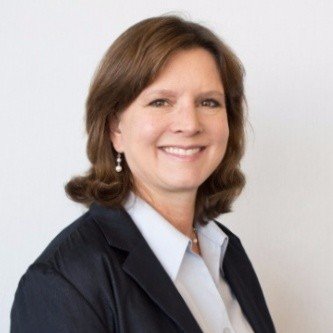A Look at the $60 Billion Industry of Medicare Fraud
The Center for Medicare and Medicaid Services (CMS) contends that Medicare fraud is a serious issue. This type of fraud typically involves intentionally submitting false claims or making false referrals for health services.
While unethical doctors and greedy executives pursue profits, Medicare patients are hurt or even killed in these Medicare schemes. The AARP estimates that Medicare loses $60 billion to con artists each year. There are some incredibly alarming examples that portray the great lengths people will take to defraud the American government.
A $375 Million Medicare Fraud Scheme
In one shocking Texas case, physician Jacques Roy used home health care companies in his Medicare scheme. In-home health care agencies send nurses and nurses aides to the home to care for elderly, homebound patients who otherwise could not get care.
Roy recruited employees from certain home health care agencies and paid them kickbacks to canvass elderly neighborhoods to find patients. Roy even had people recruit homeless shelter residents to come into his clinic. These recruiters would offer cash or food to these patients — all the patient had to do was give the recruiter his or her Medicare number. For each person found by one of Roy’s minions, the recruiter was paid $50 when the patient provided the Medicare numbers.
Roy then created fake patient files; the doctor also created a company called Medistat Group Associates to help in the ruse. Medistat would take the patient files and add Roy’s signature to certify these patients were eligible for home health care. Medicare was billed by the home health care companies that were in on the scheme, and those companies then paid Roy a kickback. The companies also referred patients to Roy, who also billed Medicare for non-existent additional medical services that these patients never received.
As many of these doctors do, Roy became too greedy. His astronomical billing figures set off alarm bells with the U.S. Department of Health and Human Services, who reported him to the Office of the Inspector General. They found that during a five-year period from 2006 to 2011, Roy certified over 11,000 Medicare patients for home health care. What tipped them off? Roy’s numbers were more than any doctor in the entire U.S.
Incredibly, Roy’s scheme brought in $375 million from Medicare as well as Medicaid. The fraud is the largest home health care fraud case in the history of both programs, and in April 2016, Roy was convicted on eight felonies.
The Dangerous Consequences of Medicare Fraud are Wide-Ranging
This type of fraud has far-reaching implications beyond just damaging the Medicare program. A lot of medical research relies on billing data, so if doctors like Roy create fake billings, researchers will possibly draw incorrect conclusions.
Medicare patients have even been harmed in some of these schemes. In one example of Detroit hematologist Farid Fata, this doctor administered chemotherapy treatments to patients who, in many cases, did not even have cancer. His scheme, which involved over 500 patients, landed Fata in prison in 2015, where he is serving a 45-year sentence.
Another scheme in the northeastern U.S. involved a medical imaging company that employed people posing as doctors, who examined images like X-rays and ultrasounds of nursing home patients to turn in bogus billings to defraud Medicare. In one case, the imaging company missed a diagnosis of congestive heart failure (because a fake doctor read it); the patient died. In a similar case, a woman’s scan was also misinterpreted and she died of congestive heart failure in the nursing home rather than being transferred to a hospital for proper care.
US Medicare Fraud Strike Force Team
To combat this fraud, the U.S. Office of the Inspector General formed a Medicare Fraud Strike Force Team over a decade ago. The team pulls expertise from the FBI, Department of Justice and U.S. Attorneys. So far, the team has operations in nine states; as of January 2018, over 3,500 people have been arrested. Combined, these culprits have defrauded the government out of an astonishing $12 billion in false claims.
In 2018, the task force busted Michigan physician Millicent Traylor, who was convicted of a $9 million home health care scheme similar to the one masterminded by Jacques Roy. Amazingly, Traylor was not even licensed as a physician during the scheme. Sadly, Traylor forged the names of other licensed physicians to provide opioid prescriptions as a reward for patients joining her scheme.
Just last month, in June 2018, a CEO and four doctors were indicted on a $200 million fraud scheme at Michigan and Ohio pain clinics. Task force team members say this group distributed more than four million unnecessary dosages of opioids and other controlled substances as kickbacks to patients. Most of the drugs were then sold on the streets by the patients who had received them. Many of the patients were already addicted to these painkillers, and the doctors knew that. The doctors even coerced patients into receiving unnecessary and painful injections, just so the doctors could submit higher bills to Medicare.
The trial of CEO Mashiyat Rashid and his co-conspirators begins this month. The U.S. government closely monitored Rashid for a few years, finding that he paid himself lavish sums by transferring funds out of his businesses to pay for luxury personal items like clothes, rare watches, sports cars, NBA Finals courtside tickets and a multi-million mansion.
Attorney General Jeff Sessions recently commented on the case: “We are facing the deadliest drug crisis in American history, but sadly, some corporate executives and medical professionals continue to exploit vulnerable patients and the American taxpayer for profit. With one American dying of a drug overdose every nine minutes, this indictment reflects the Department of Justice’s determination to prosecute those who engage in opioid-related fraud.”
From $5 Billion To Zero, CEO Of Theranos Charged With Massive Fraud (UPDATE)















